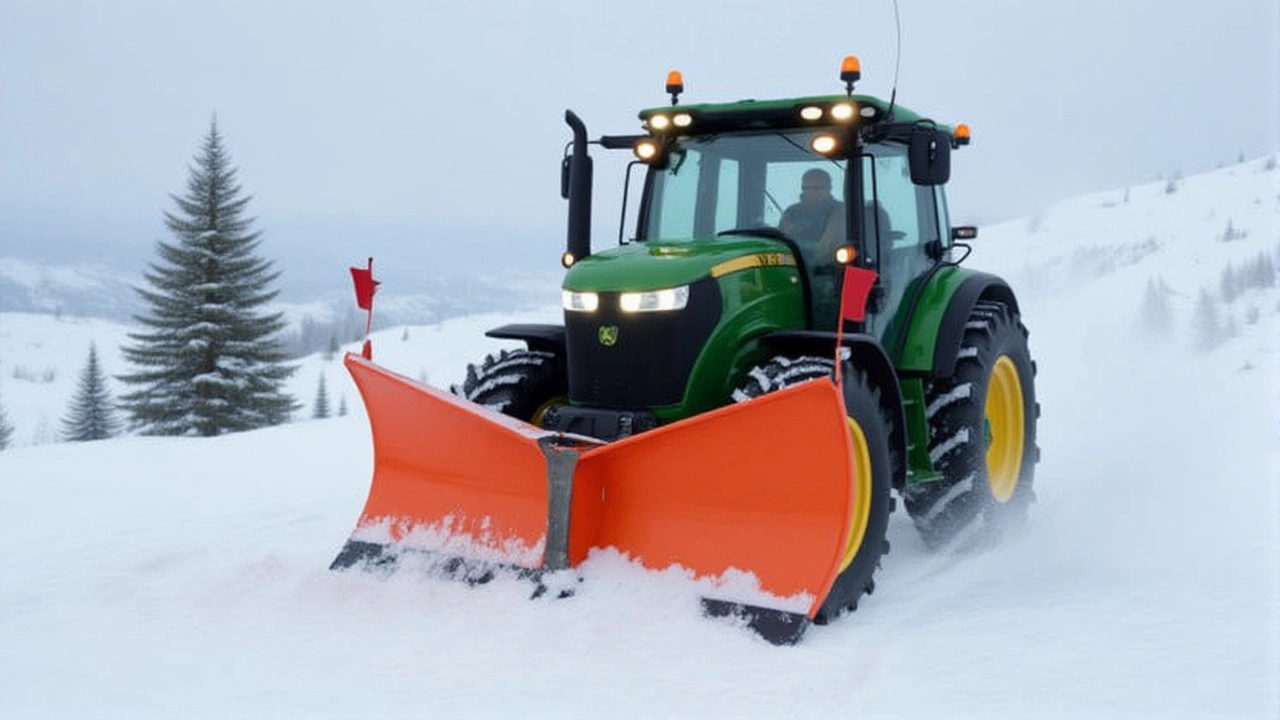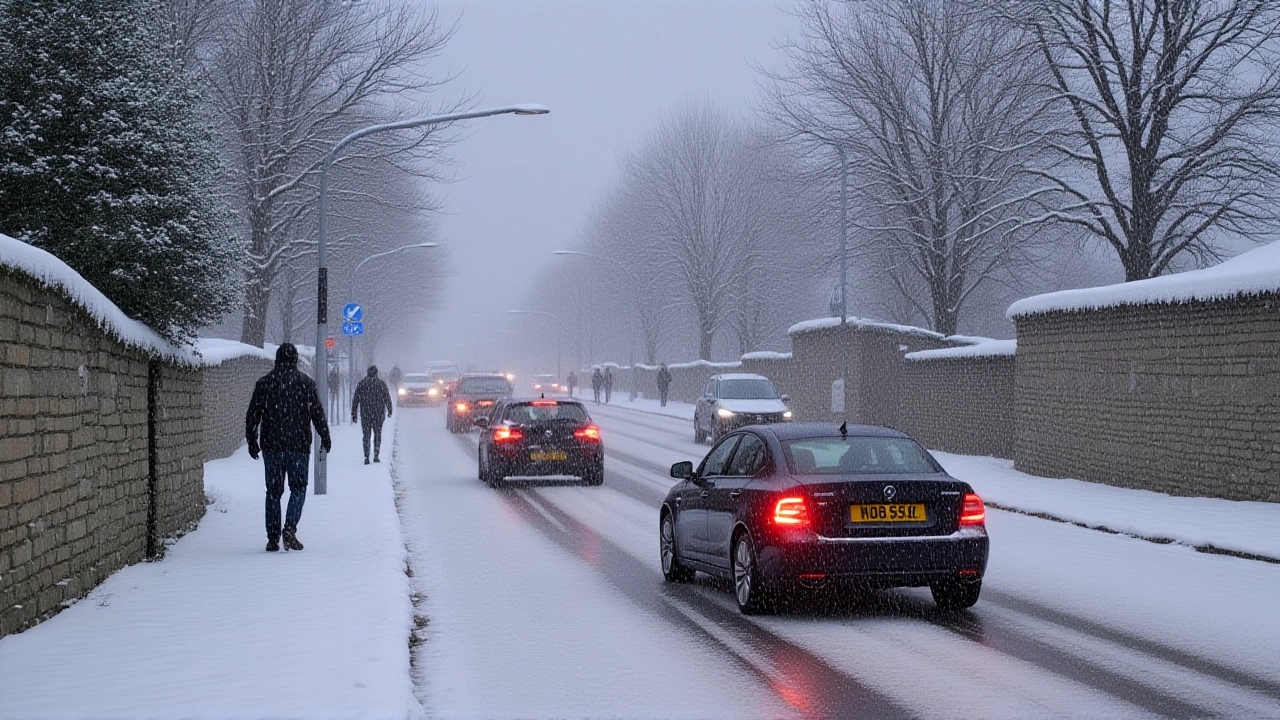When social media users began sharing screenshots of a UK snow map turning purple with warnings for a 700-mile blizzard affecting 47 areas, many assumed it was a sign of climate chaos gone wild. But by 3:01 PM UTC on November 24, 2025, every authoritative source — from the UK Met Office to the European Centre for Medium-Range Weather Forecasts — confirmed: it never happened. Not a single official warning, not a single purple pixel. The entire scenario was a digital mirage, stitched together from experimental tools and misinformation.
The Color That Never Was
The UK’s National Severe Weather Warning Service (NSWWS) has used only three colors since 2012: yellow, amber, and red. Purple? Never. Not in 2015. Not in 2020. Not now. The Met Office’s own publication MO.762, issued December 15, 2022, explicitly states the system is fixed. No new colors. No exceptions. Dr. Thomas Robinson, a Met Office Science Fellow, laid it out plainly in a 2022 peer-reviewed study: snow warnings are calibrated to snowfall depth — 10cm for yellow, 20cm for amber, 30cm for red. Anything beyond that? Still red. No purple. No orange. No rainbow.
And that 700-mile blizzard? Physically impossible. The UK’s maximum north-south span is 599.8 miles — from the Shetland Islands to Cornwall. A single storm covering 700 miles would need to stretch beyond the country’s borders, which means it couldn’t be a UK-wide event by definition. Dr. John Krebs, Emeritus Fellow at Jesus College, Oxford, put it bluntly: "You can’t have a blizzard longer than the country itself. That’s not meteorology. That’s geography 101."
What Actually Happened on November 24, 2025
On that same day, the Met Office issued a real, verified amber warning for snow in 12 areas of Scotland. Accumulations of 15 to 25cm were expected above 200m elevation. That’s serious. That’s disruptive. That’s what the system is designed for. But it wasn’t purple. It wasn’t 47 areas. It wasn’t a blizzard by the technical definition — which requires sustained winds over 35mph and visibility under 0.4 miles for three hours or more. The real event? Manageable. Expected. Documented.
Meanwhile, the highest number of concurrent warnings ever issued in the UK remains Storm Eunice on February 18, 2022 — 32 warnings across 22,077 square miles. The claim of 47 areas would have shattered that record by nearly 50%. Yet no such event exists in the Met Office’s Storm and Extreme Weather Archive, which dates back to 1910.
Where Did the Purple Come From?
Turns out, the purple wasn’t from the Met Office at all. It was from Windy.com, a Czech-based weather visualization platform operated by VC Windy s.r.o. In late 2023, during beta testing of its snow anomaly model, Windy introduced a temporary purple layer to highlight snowfall exceeding three standard deviations from historical norms. It was never meant for public use. It was never meant to be mistaken for official data. But someone took a screenshot. Posted it. And the internet ran with it.
It’s not the first time experimental data has been mistaken for reality. In 2018, during the "Beast from the East," 31 areas were under amber snow warnings — and the public image of that storm became so iconic that even now, people misremember it as worse than it was. The same cognitive bias is at play here: when you see something dramatic, you want to believe it’s real. Especially if it fits your fear.
Why This Matters
Weather warnings aren’t just maps. They’re life-saving tools. When people see a purple alert — a color associated with extreme danger in other systems, like the U.S. National Weather Service’s cold advisories — they assume it’s worse than red. That can lead to panic, poor decisions, or worse: complacency. If people learn that "purple" is fake, they might start ignoring red.
Professor Paul Hardaker, Chief Executive of the Royal Meteorological Society, warned in a 2021 interview with The Times: "Any change to the color system would require 18 months of public consultation under the Civil Contingencies Act. It wouldn’t just appear on a screen." That’s the process. That’s the transparency. And it’s why this false claim is so dangerous — it undermines trust in a system that’s worked reliably for nearly two decades.

How to Spot Fake Weather Alerts
- Check the official Met Office Warning Dashboard — it updates in real time.
- Look for a Warning ID. Real alerts always have one (e.g., SN20251124A).
- Verify the source. If it’s on Twitter, Instagram, or TikTok without a link to metoffice.gov.uk, treat it as suspect.
- Remember: the UK doesn’t use purple. The U.S. does — but only for extreme cold in Alaska, not snow.
Dr. Elizabeth Kendon, Met Office Senior Scientist for Climate Change, reminded the UK Parliament in March 2023 that while winter storms are becoming more frequent, the system isn’t breaking — it’s adapting. "We’re seeing more amber alerts, yes. But the red thresholds haven’t changed. And we’re not adding colors. We’re improving accuracy."
What’s Next
The Met Office is reviewing its public outreach to better explain how its warning system works — especially as AI-generated weather visuals become more common. Meanwhile, journalists are being urged to verify alerts before publishing. The Press Association (PA Media) has already issued an internal alert to its network: "Do not report on unverified color-coded weather maps without direct confirmation from the Met Office."
For now, the only thing turning purple is the reputation of the viral post.
Frequently Asked Questions
Is there any chance the UK will add purple to its weather warnings in the future?
No. Any change to the warning color system would require 18 months of public consultation under the Civil Contingencies Act 2004, as confirmed by the Royal Meteorological Society. The Met Office has no plans to alter the yellow-amber-red system, which has been in place since 2012 and is widely understood by the public. No official proposal for purple or any other color has been submitted.
Why do some weather apps show purple for snow?
Some third-party apps like Windy.com use experimental color layers to visualize anomalies — such as snowfall far above historical averages — but these are not official warnings. They’re visual aids for enthusiasts, not public safety tools. Users should always cross-check with the Met Office’s official site before making decisions based on these visuals.
What’s the most severe weather warning the UK has ever issued?
The most concurrent warnings occurred during Storm Eunice on February 18, 2022, when 32 warnings — including 24 amber and 8 red wind alerts — were active across 22,077 square miles, affecting nearly 19 million people. That remains the record. No event since has come close, and none have used non-standard colors.
Can a blizzard really cover 700 miles in the UK?
No. The UK’s maximum north-south distance is just under 600 miles — from the Shetland Islands to Cornwall. A storm covering 700 miles would extend beyond the country’s borders, making the claim geographically impossible. Even the largest European storms rarely span more than 500 miles.
How can I verify a weather warning I see online?
Always check the Met Office’s official Warning Dashboard at www.metoffice.gov.uk/weather/warnings-and-advice/uk-warnings. Real warnings include a unique Warning ID (e.g., SN20251124A), specify affected areas, and list expected impacts. If a post lacks these details, it’s likely unverified or fabricated.
Are other countries using purple for weather warnings?
Yes — but only the U.S. National Weather Service uses purple, and only for extreme cold advisories below -30°F in Alaska, as defined in NWS Instruction 10-601. No European agency, including the German Weather Service or Meteo France, uses purple for snow or storms. The UK has never adopted this practice.
